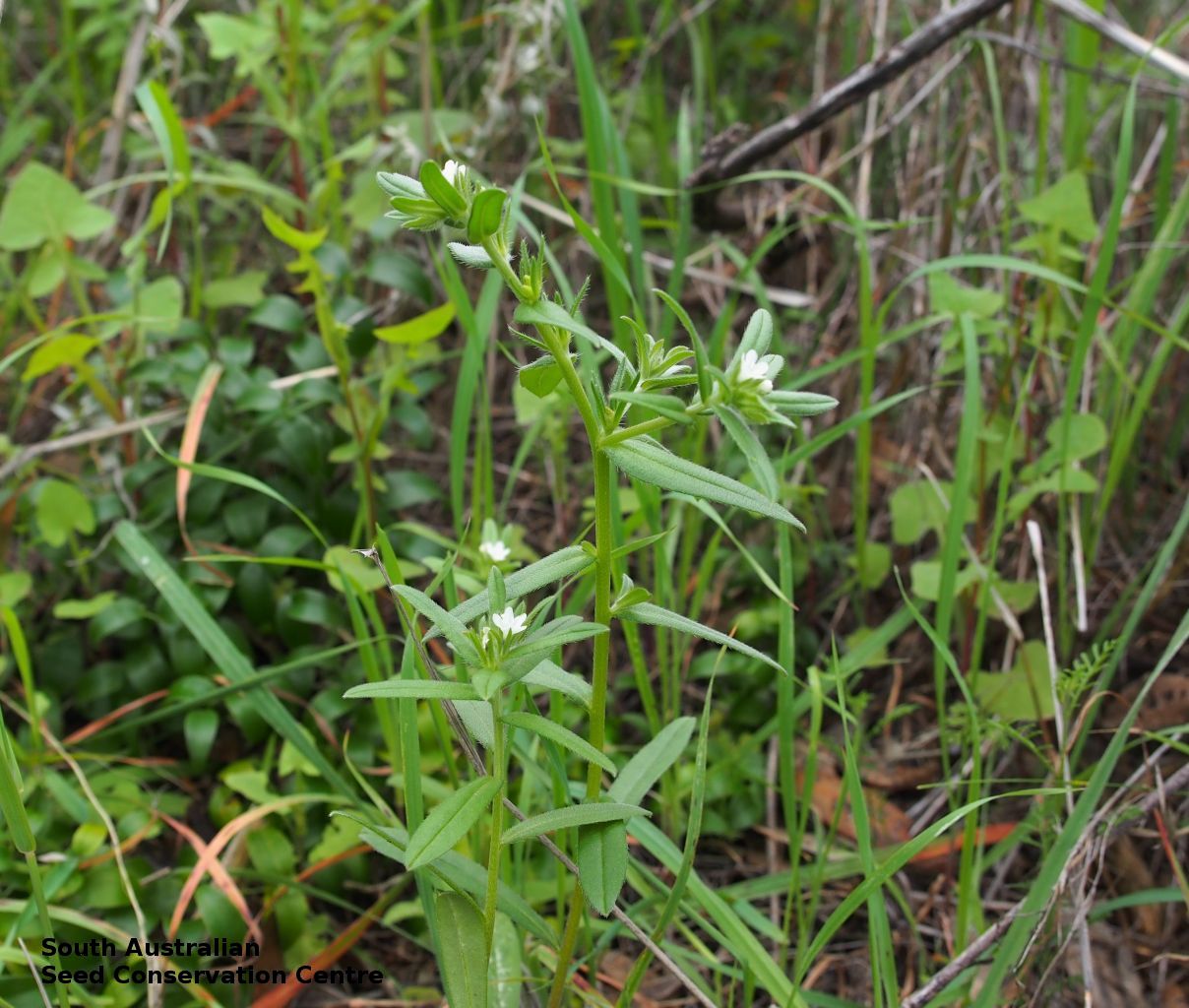
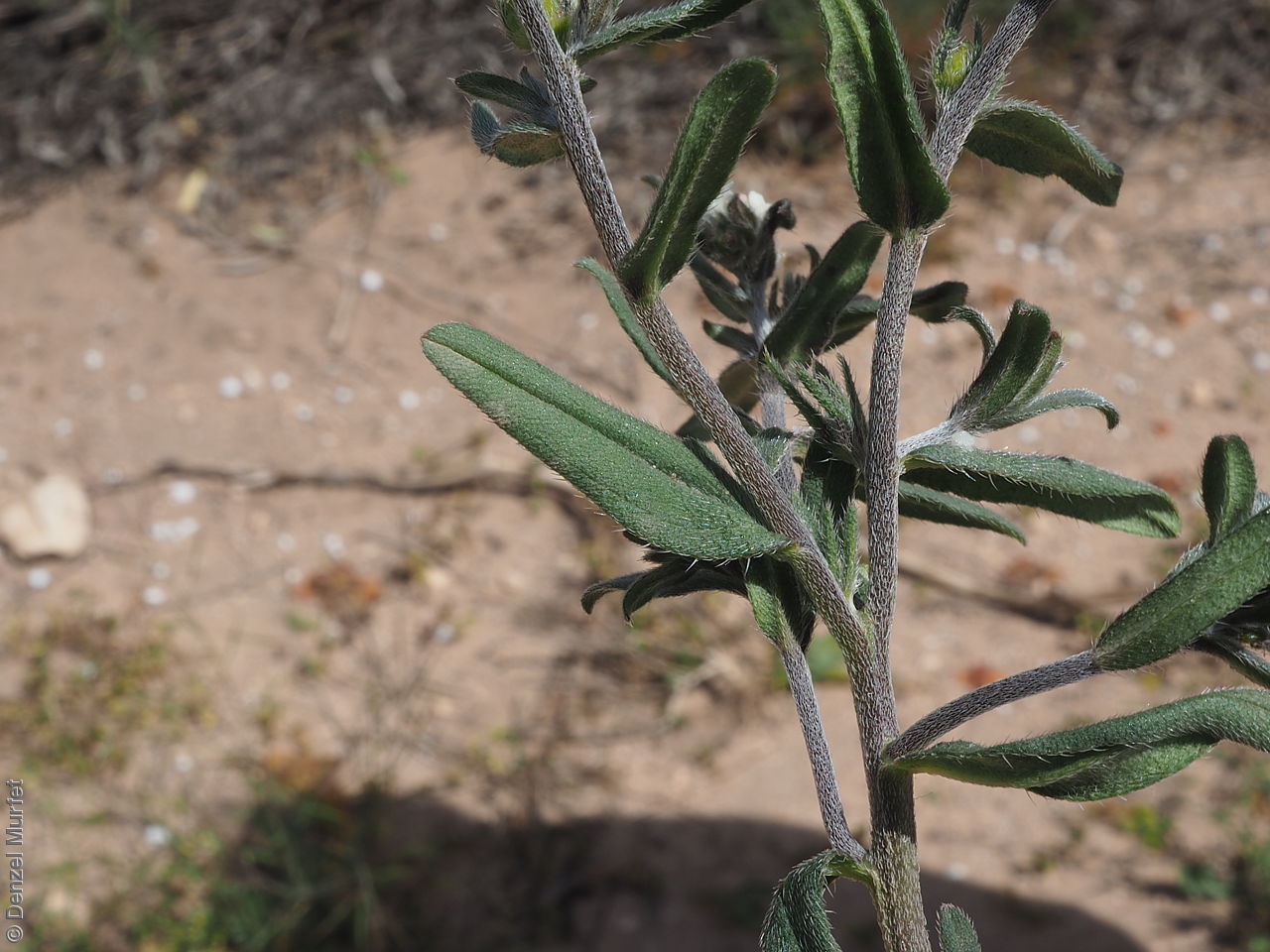
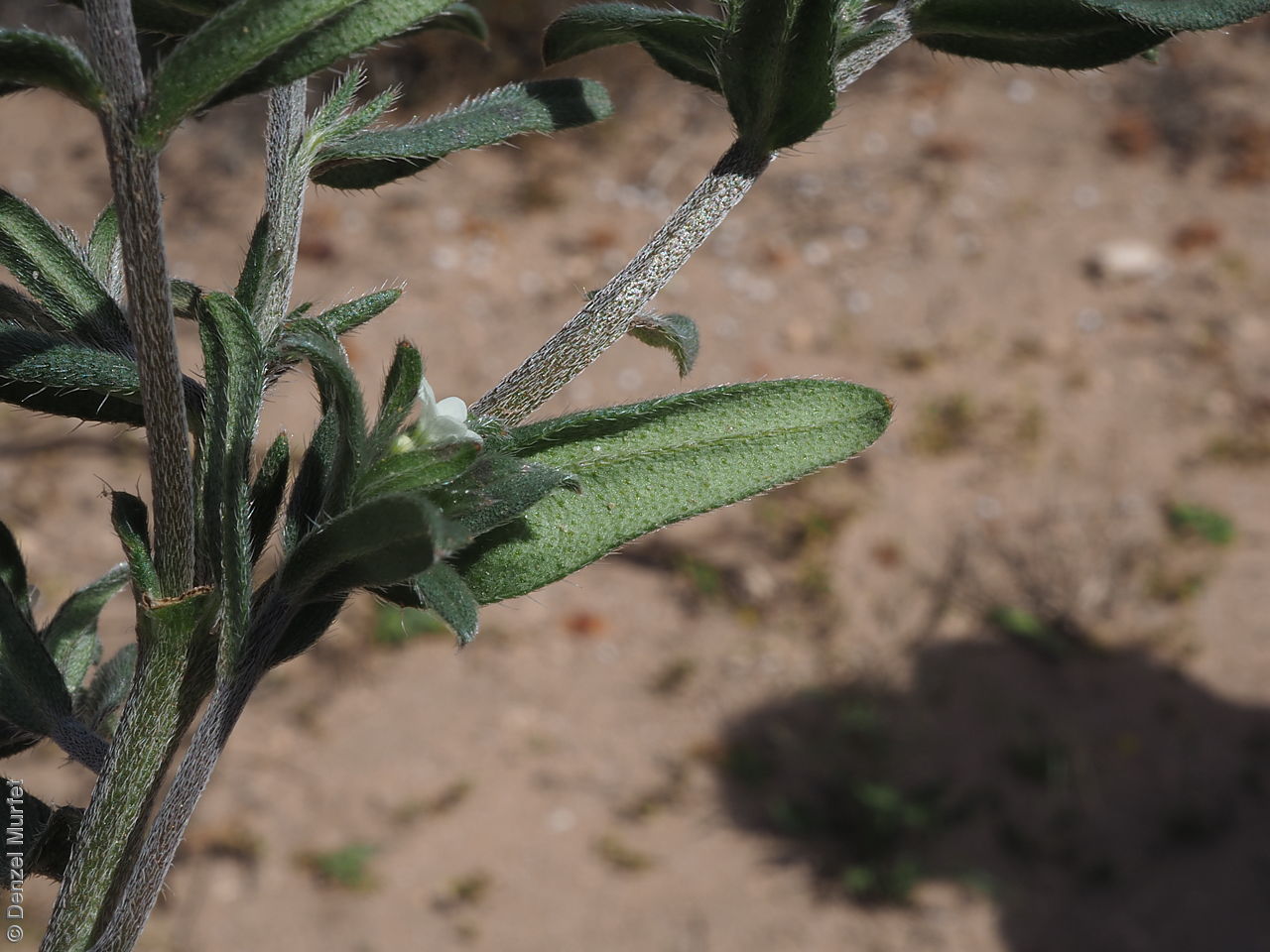
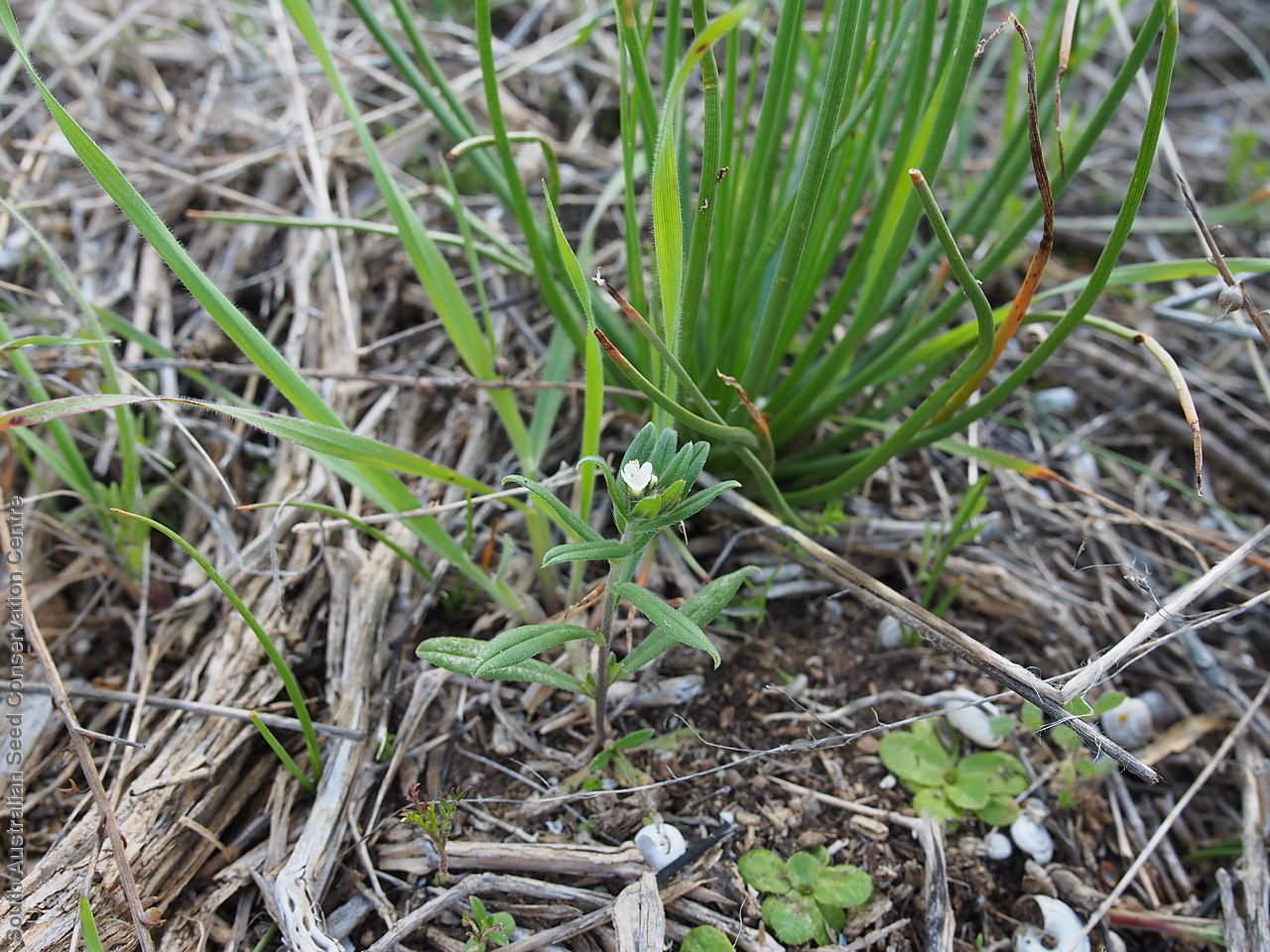
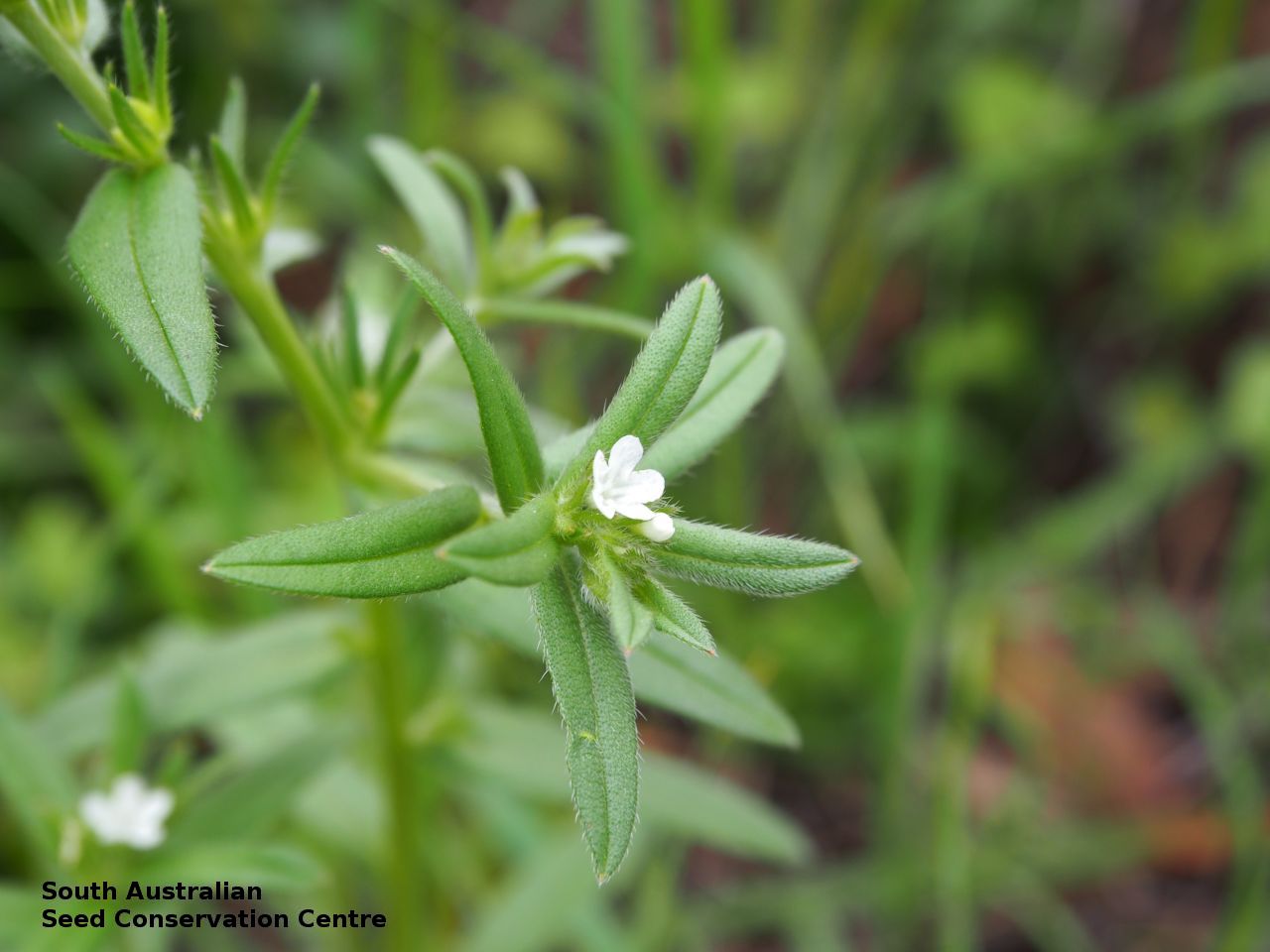
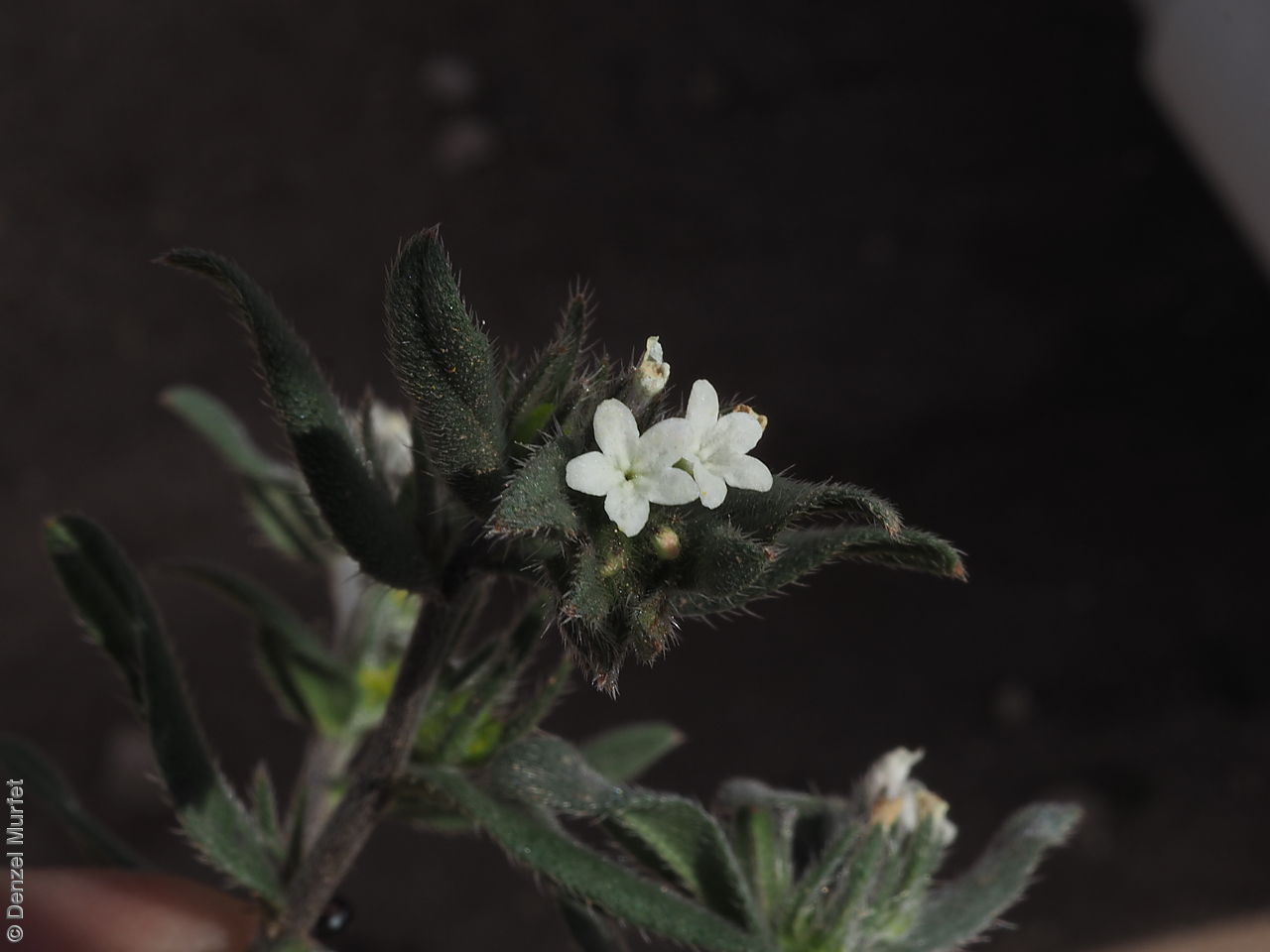
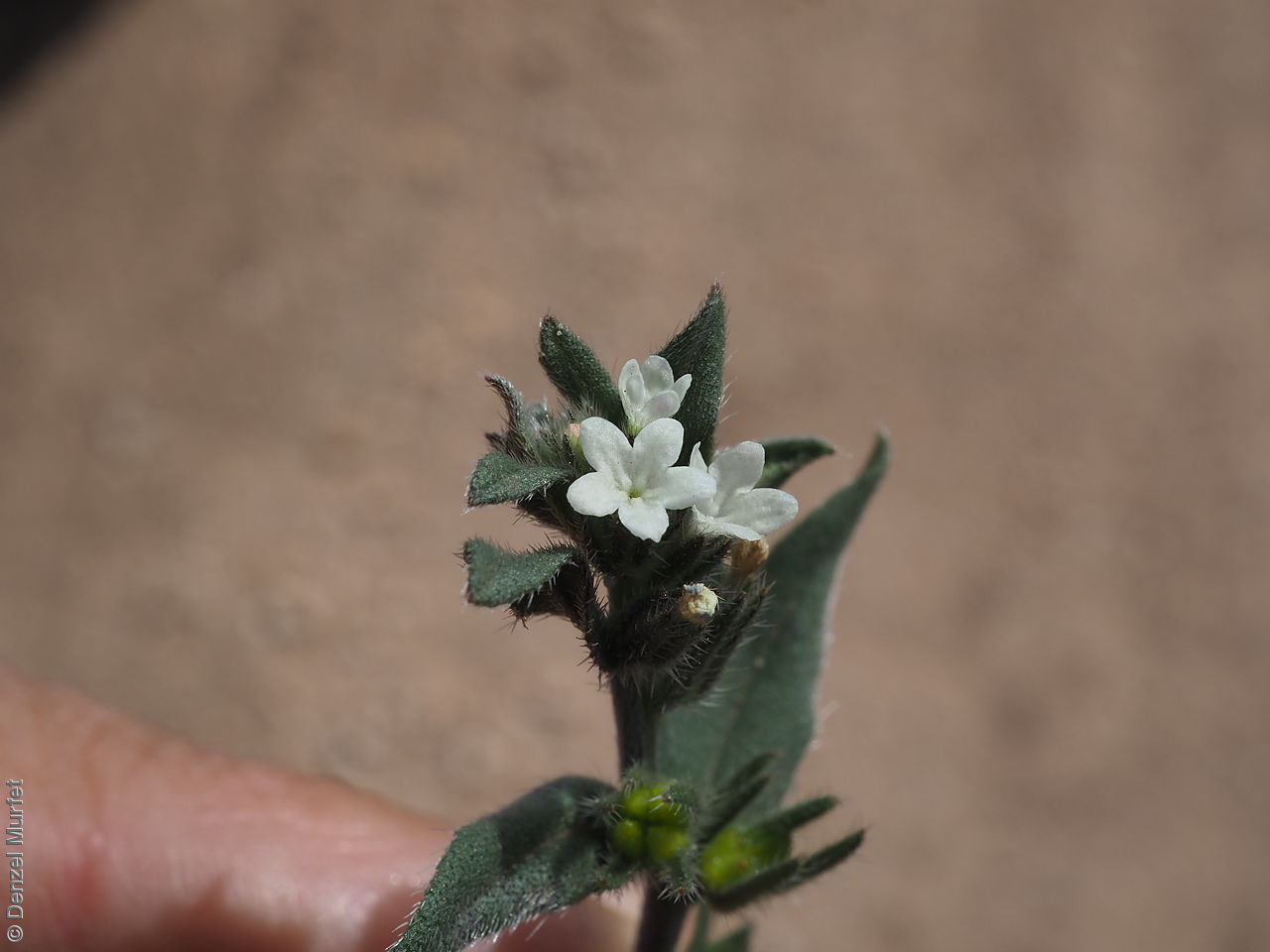
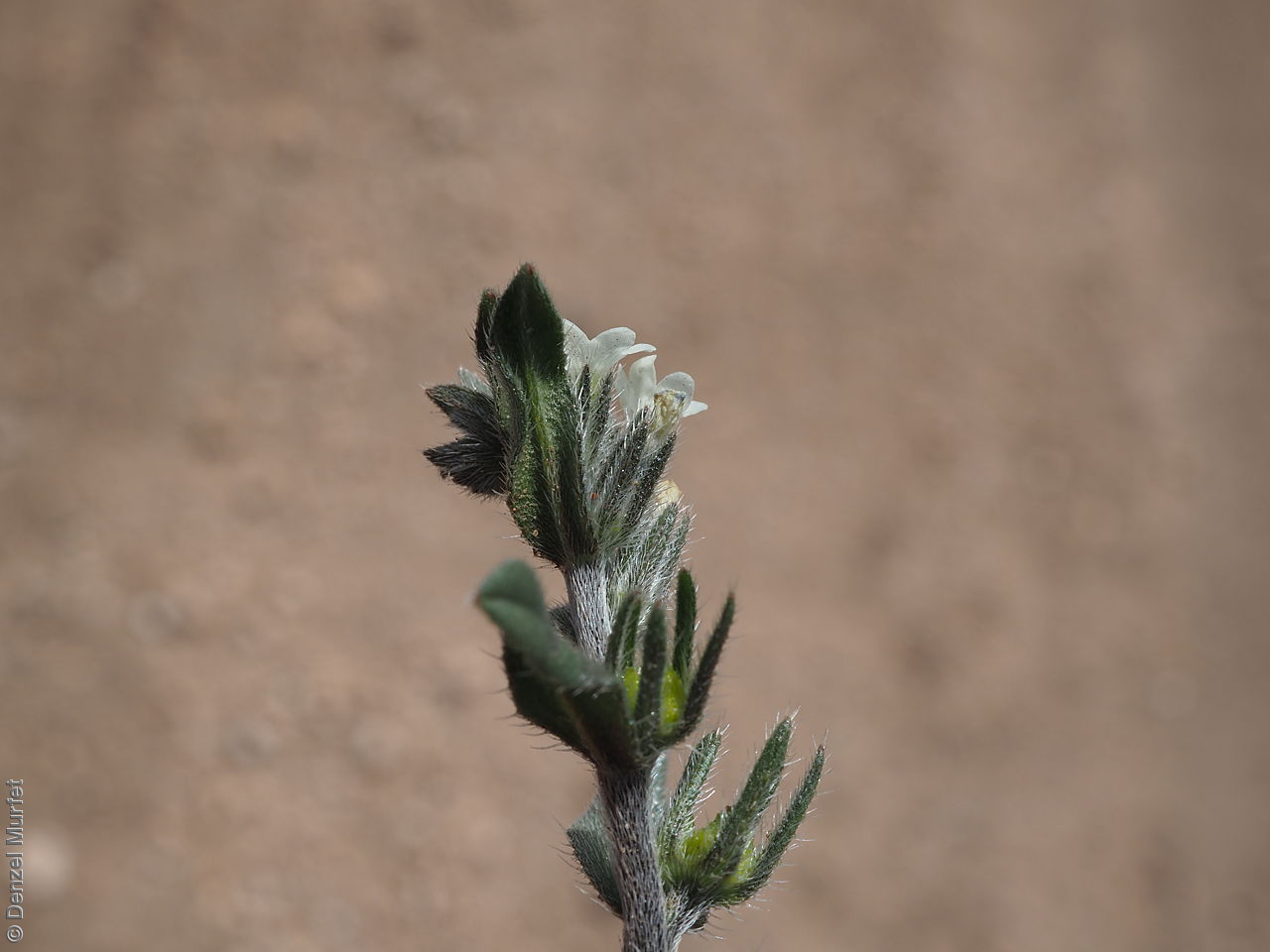
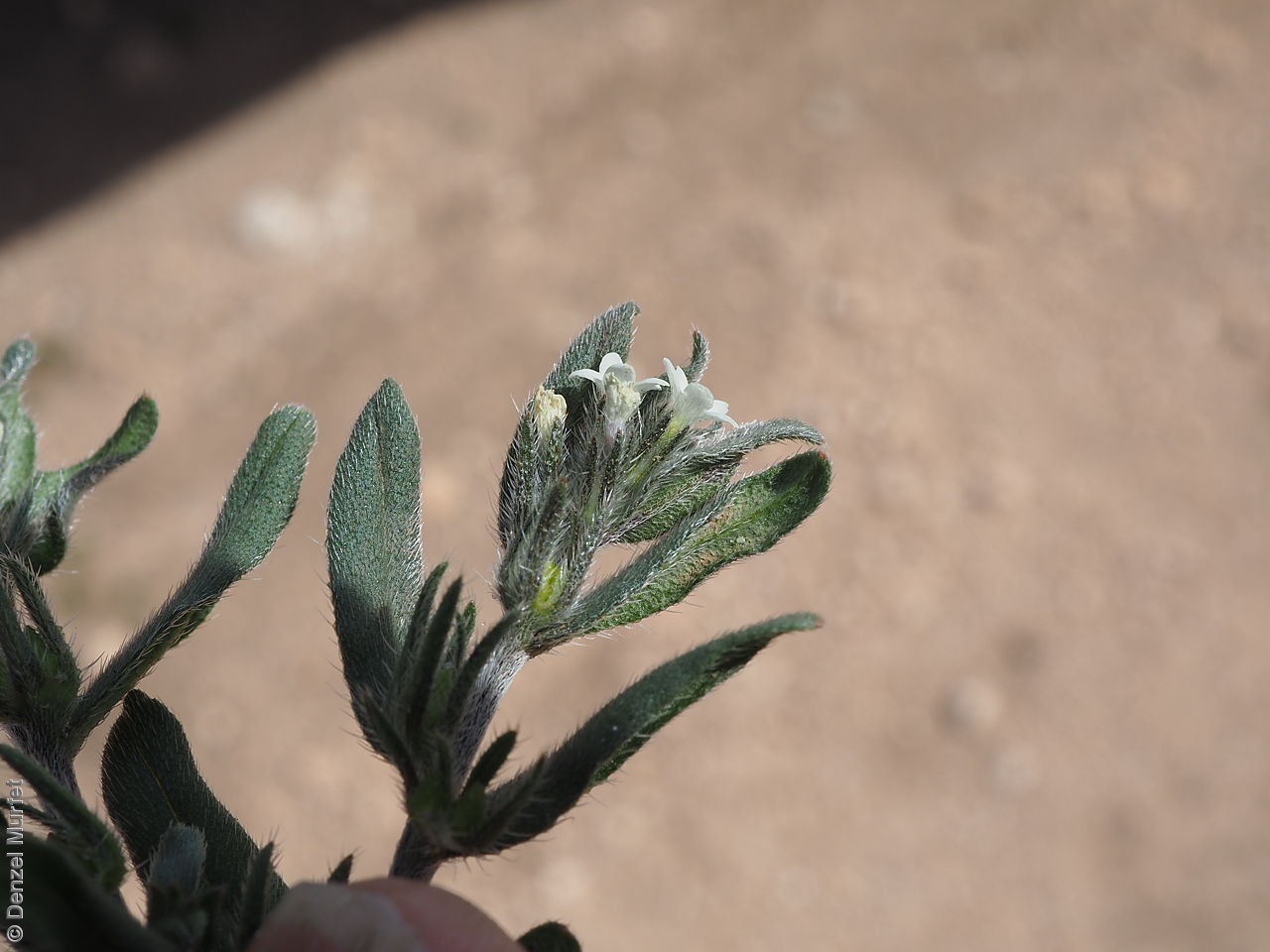
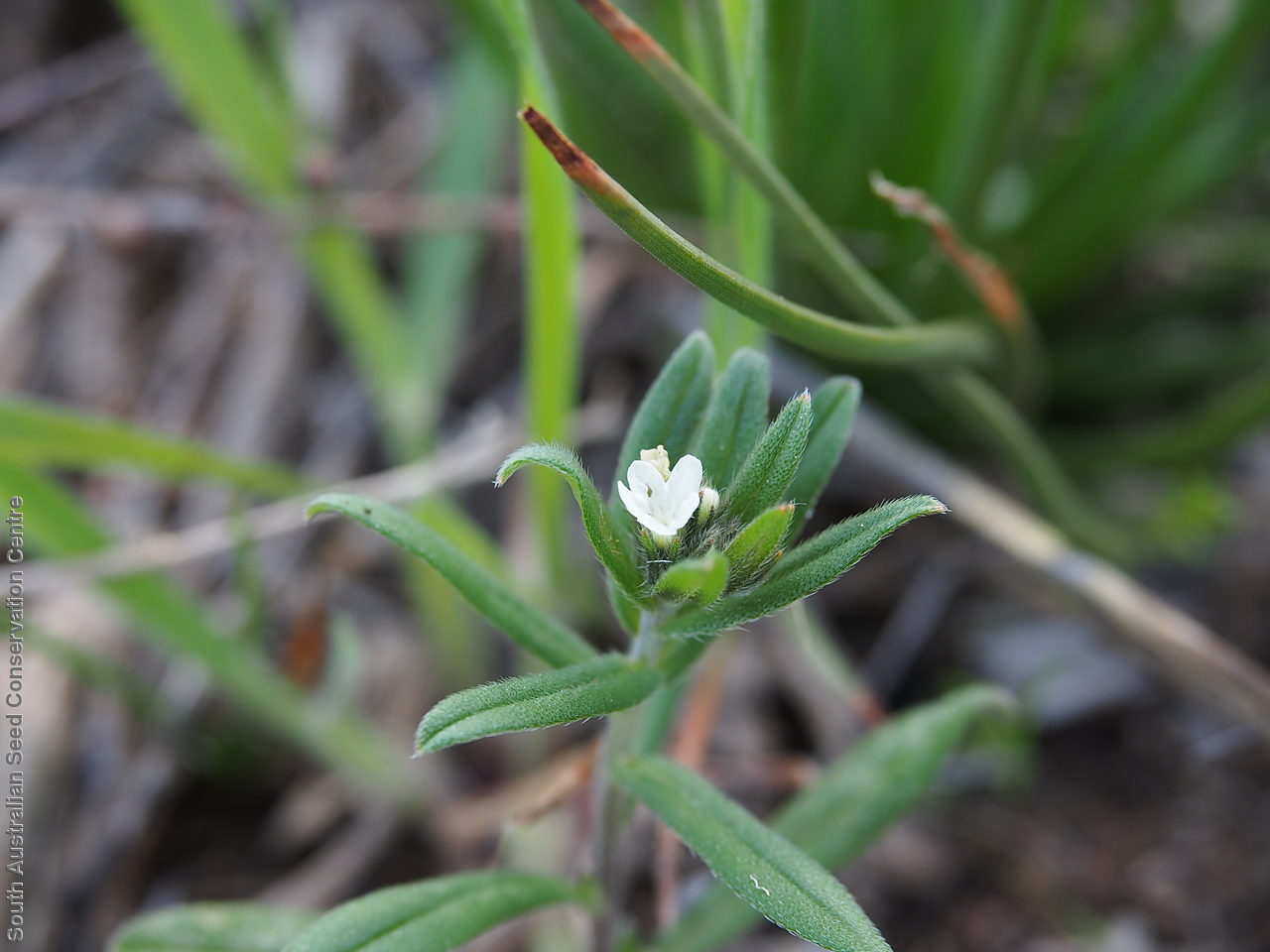
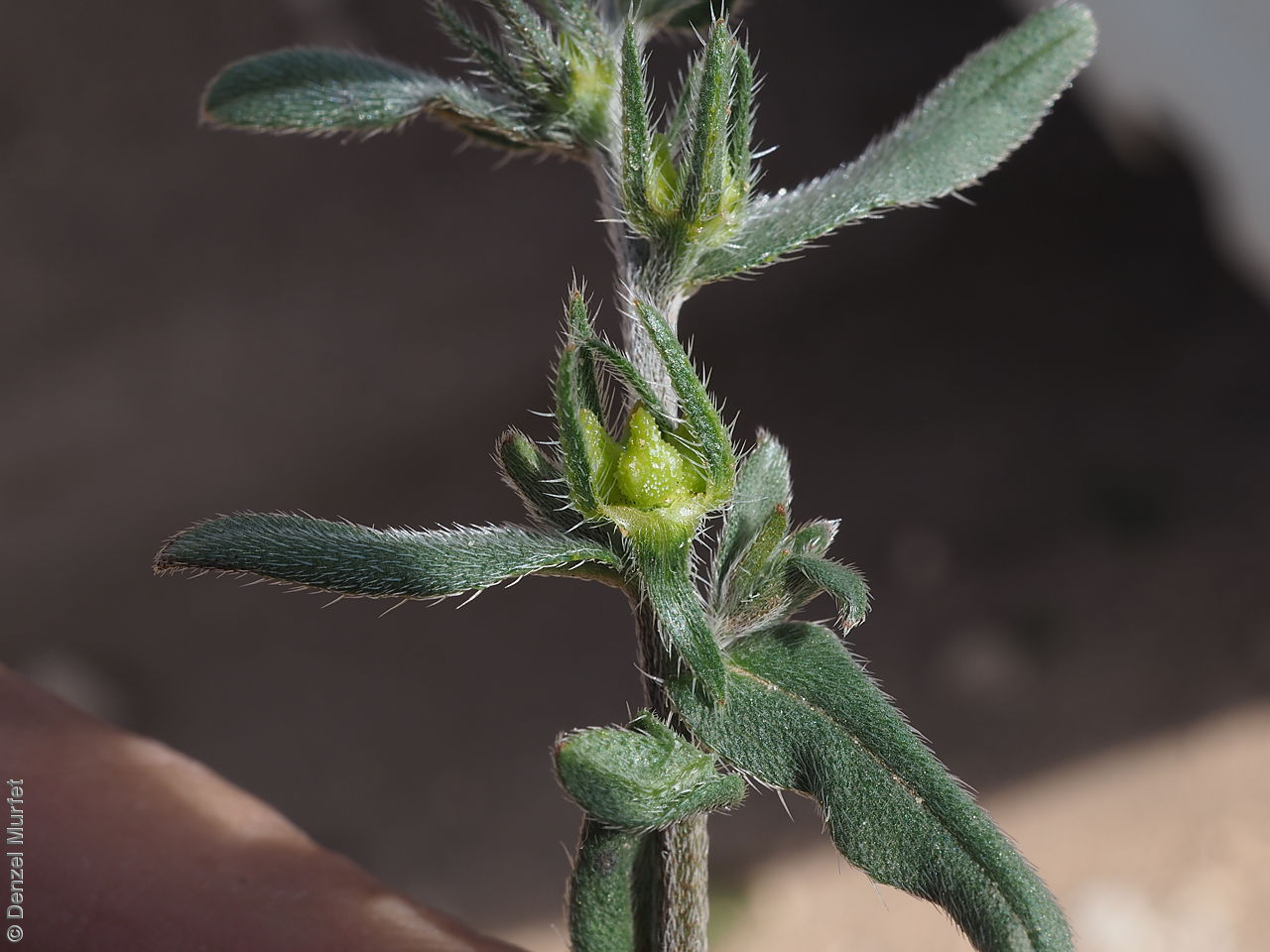
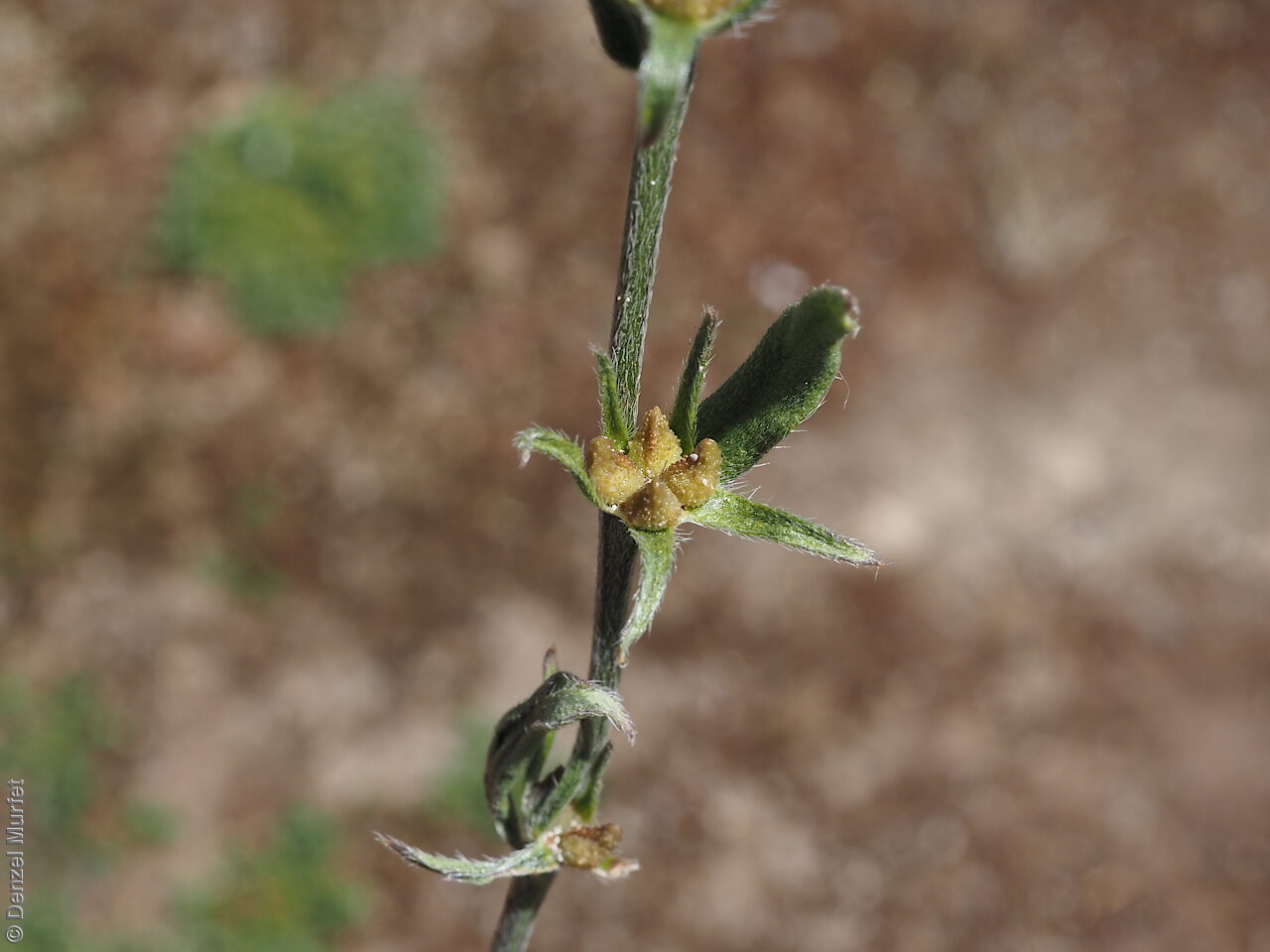
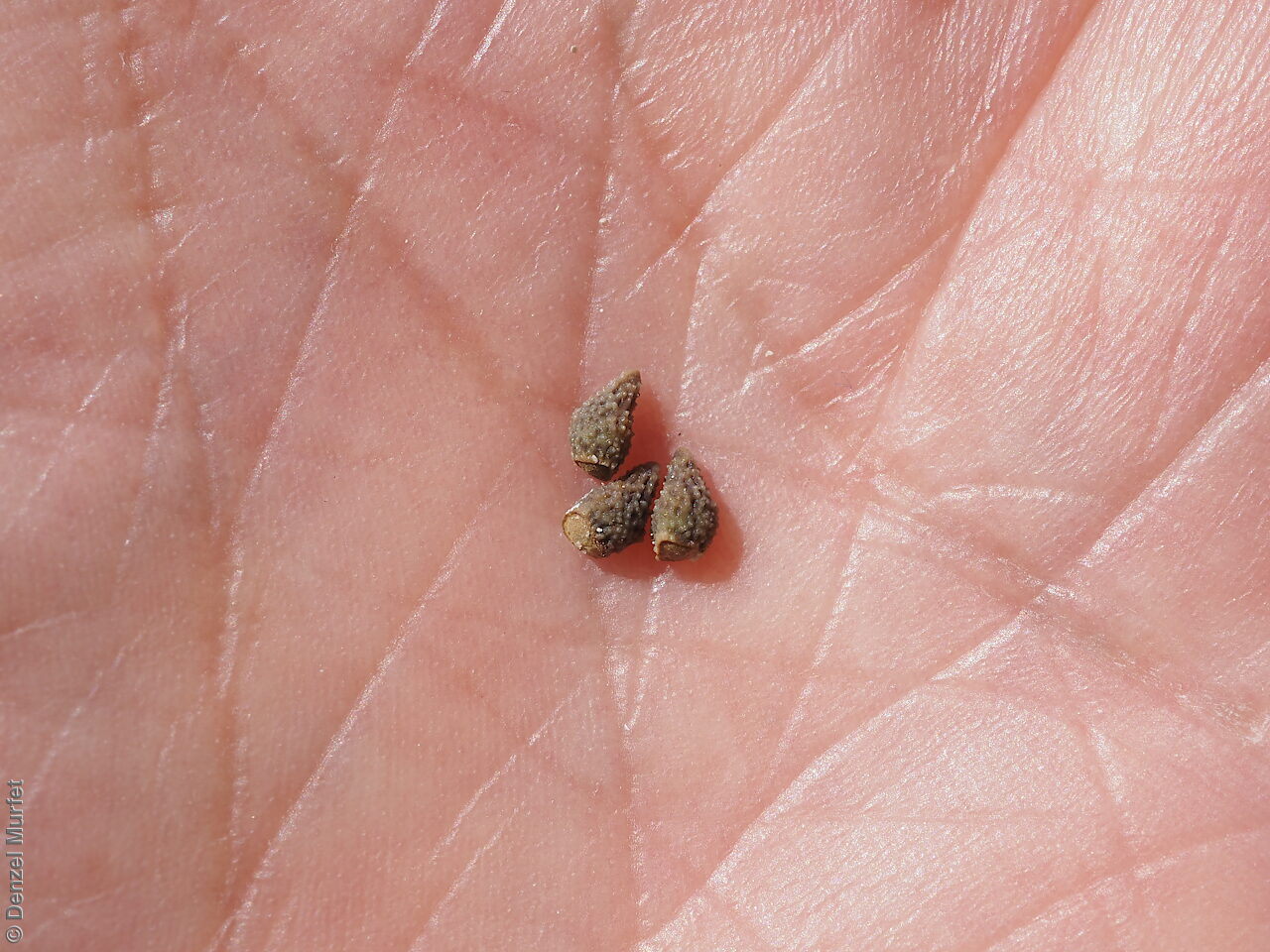

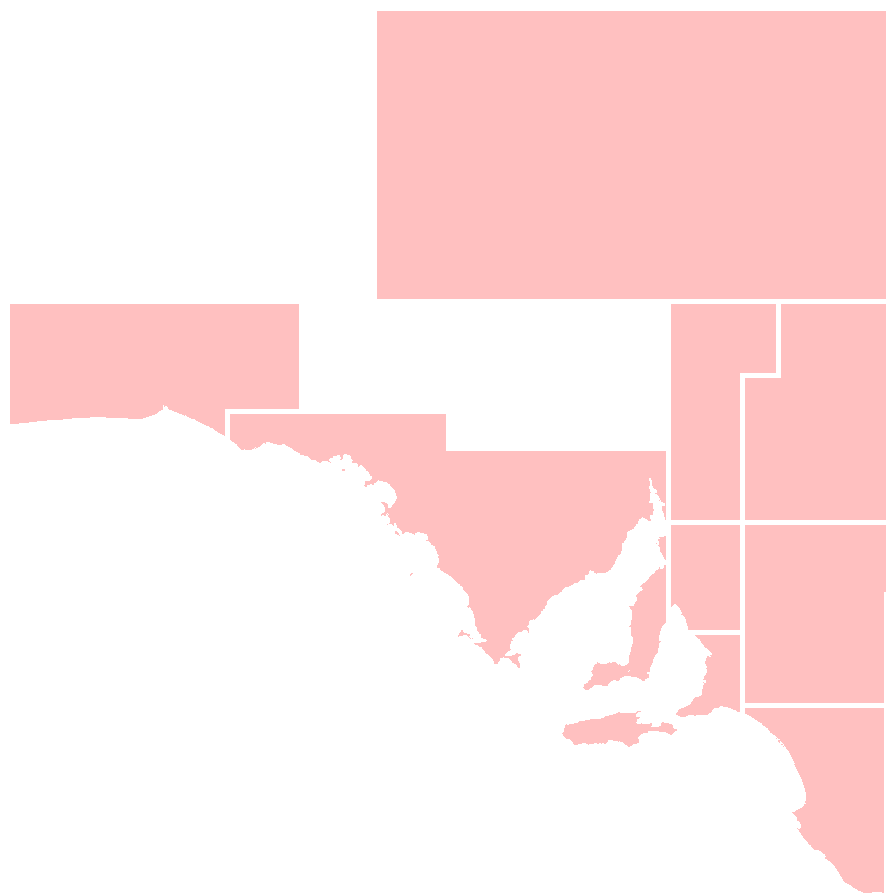
Botanical art
Prior names
Lithospermum arvense
Common names
Corn Gromwell
Sheepweed
Etymology
Buglossoides means resembling the genus Buglossa which is a synonym of Lycopsis. Arvensis from Latin meaning from/of the field; referring to the habitat in which the species is most commonly found.
Distribution and status
Found in the southern part of South Australia, growing in disturbed places. Also found in all states. Introduced. Common in South Australia. Rare in the Northern Territory. Common in the other states.
Herbarium regions: Lake Eyre, Nullarbor, Flinders Ranges, Eastern, Eyre Peninsula, Northern Lofty, Murray, Yorke Peninsula, Southern Lofty, Kangaroo Island, South Eastern, Green Adelaide
NRM regions: Adelaide and Mount Lofty Ranges, Alinytjara Wilurara, Eyre Peninsula, Kangaroo Island, Northern and Yorke, South Australian Arid Lands, South Australian Murray-Darling Basin, South East
AVH map: SA distribution map (external link)
Plant description
Erect herb to 45 cm high with few to many ascending branches and a well-developed tap-root covered in dense, coarse hairs. Leaves narrow-oblanceolate to spathulate, to 65 cm long and 10 mm wide, becoming shorter towards the apex, margins entire, surfaces densely hairy. Flowers white to cream in axil of leaves. Flowering between August and October. Fruits are brown capsule. Seed embryo type is spatulate.
Seed collection and propagation
Collect seeds between October and December. Collect mature capsule, those that are drying off, turning brown and contain dark, hard seeds inside. Can collect individual fruit cluster or break off whole heads. Place the capsules in a tray and leave to dry for one to two weeks. Then rub the fruits gently by hand to dislodge the seeds. Use a sieve to separate the unwanted material. Store the seeds with a desiccant such as dried silica beads or dry rice, in an air tight container in a cool and dry place.